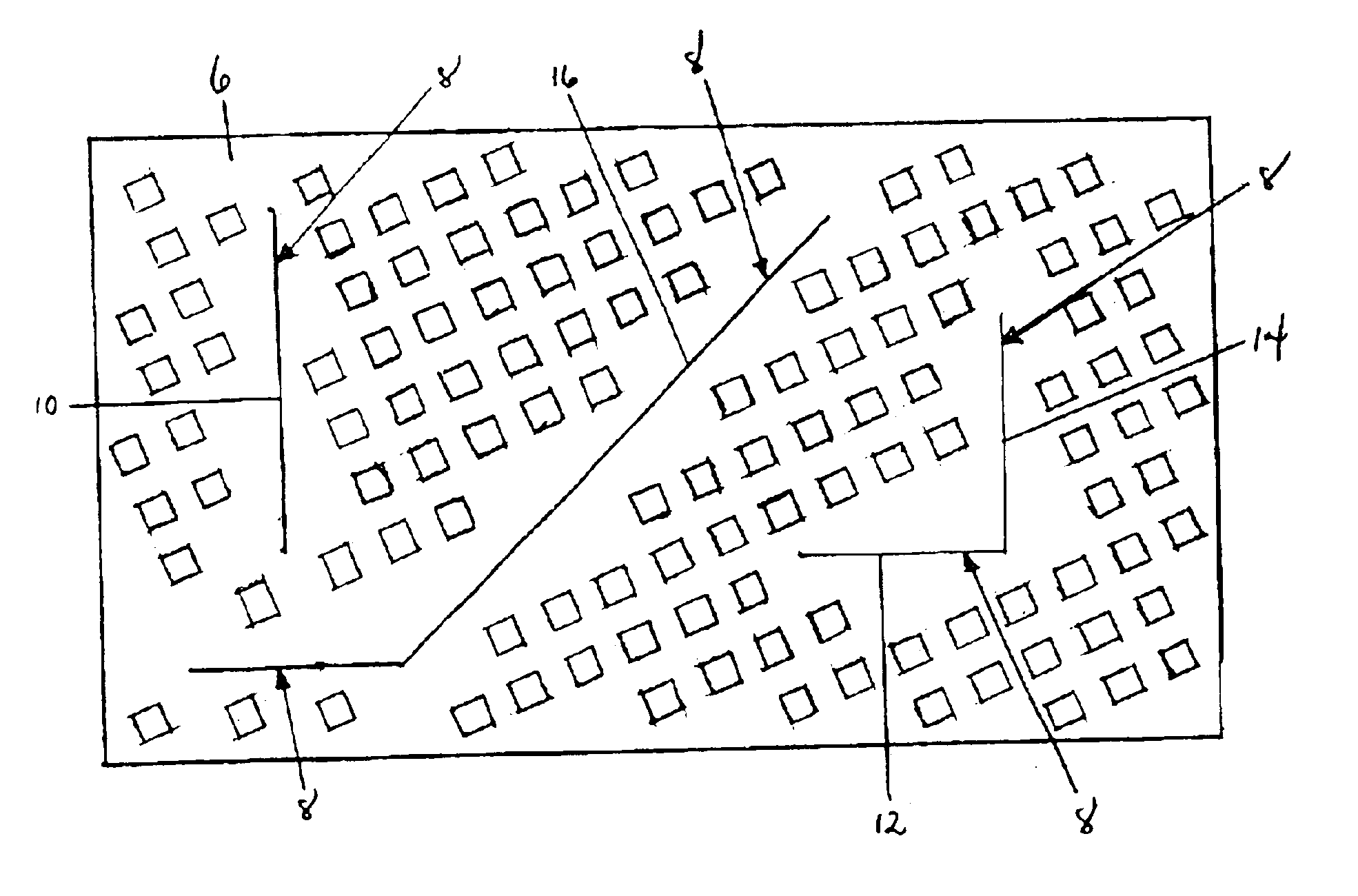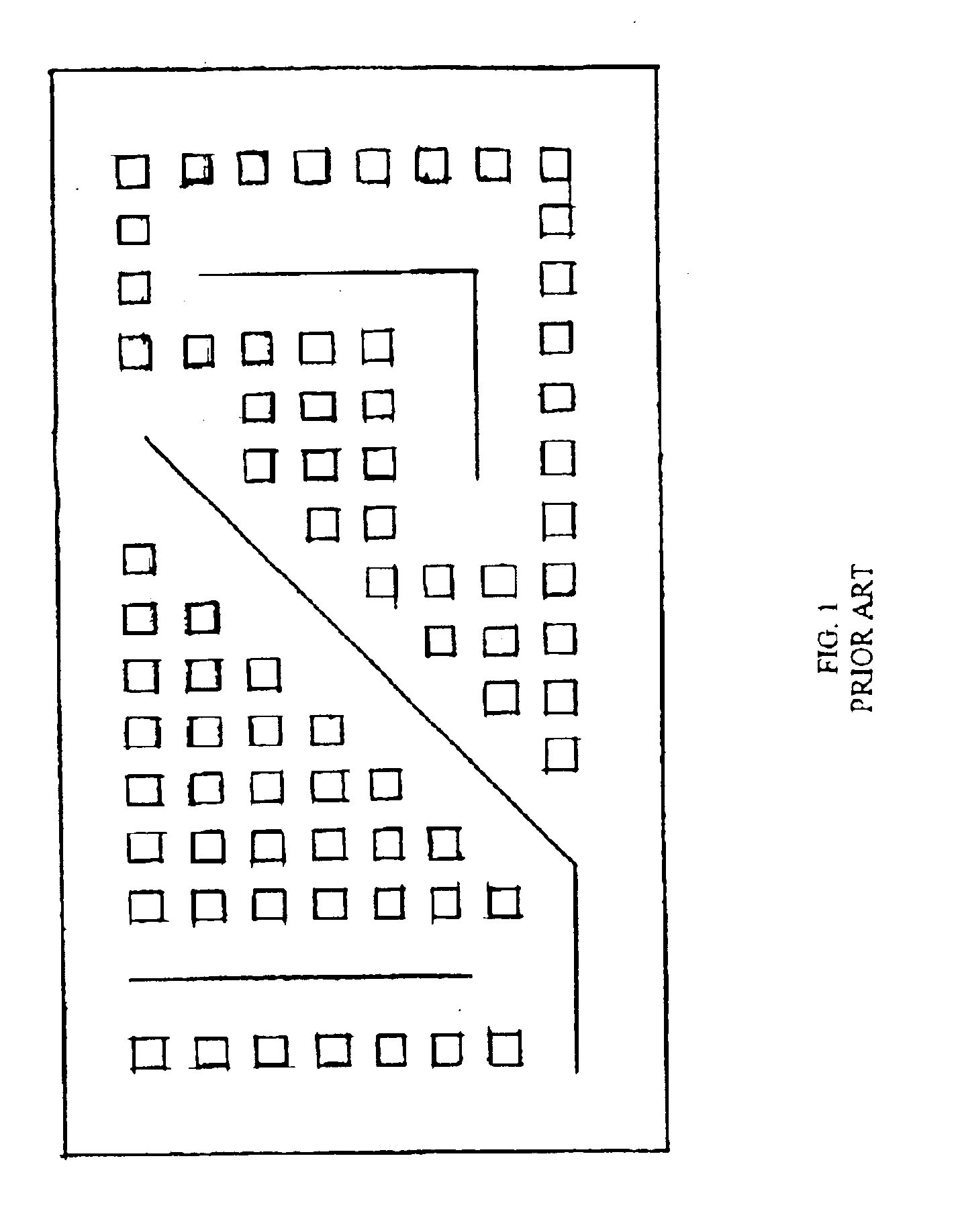Simplified tiling pattern method
a technology of integrated circuits and tiling patterns, which is applied in the direction of cad circuit design, instrumentation, and semiconductor/solid-state device details, etc., can solve the problems of inability to make consistent assumptions about the impact of electrical properties of fill tile patterns on electrical analysis, fill tiles add complexity to the electrical analysis of the circuit, and the fill tile environment is non-uniform relative to the wiring, etc., to achieve uniform density and electrical characteristics
- Summary
- Abstract
- Description
- Claims
- Application Information
AI Technical Summary
Benefits of technology
Problems solved by technology
Method used
Image
Examples
Embodiment Construction
[0015]Best Mode(s) for Carrying Out the Invention
[0016]With reference to the accompanying drawings, FIG. 2 shows a layer of an integrated circuit (IC) 6 including, inter alia, a number of electrically impressionable parts 8. By “impressionable” is meant that the parts are susceptible to environmental influences that can alter their electrical properties. Hereinafter, electrically impressionable parts 8 will be described as wire segments 10, 12, 14, 16. It should be recognized, however, that parts 8 may be any structure of IC 6 that is electrically impressionable such as resistors, wells, power bus segments, shielding structures, ground planes, wave guides, etc. In one embodiment, wire segments 10, 12, 14 may be considered orthogonal because of their relation to each other and / or other structure of IC 6 (e.g., a “top” surface 18), and segment 16 may be considered non-orthogonal because of its 45 degree angle to segments 10, 12, 14 or other structure of IC 6. It should be recognized t...
PUM
 Login to View More
Login to View More Abstract
Description
Claims
Application Information
 Login to View More
Login to View More - R&D
- Intellectual Property
- Life Sciences
- Materials
- Tech Scout
- Unparalleled Data Quality
- Higher Quality Content
- 60% Fewer Hallucinations
Browse by: Latest US Patents, China's latest patents, Technical Efficacy Thesaurus, Application Domain, Technology Topic, Popular Technical Reports.
© 2025 PatSnap. All rights reserved.Legal|Privacy policy|Modern Slavery Act Transparency Statement|Sitemap|About US| Contact US: help@patsnap.com



